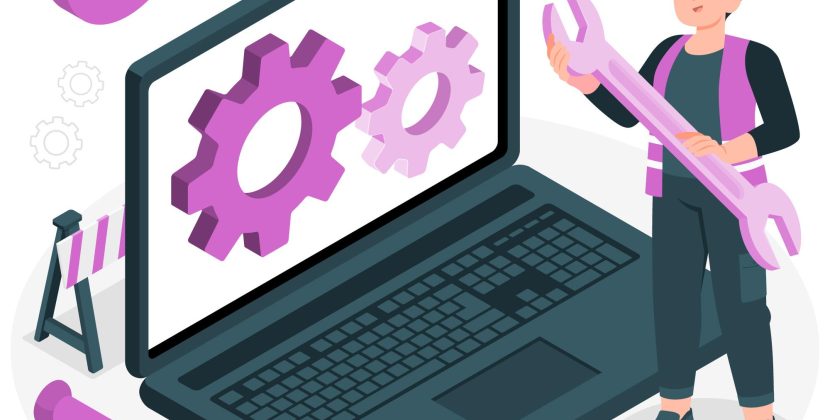

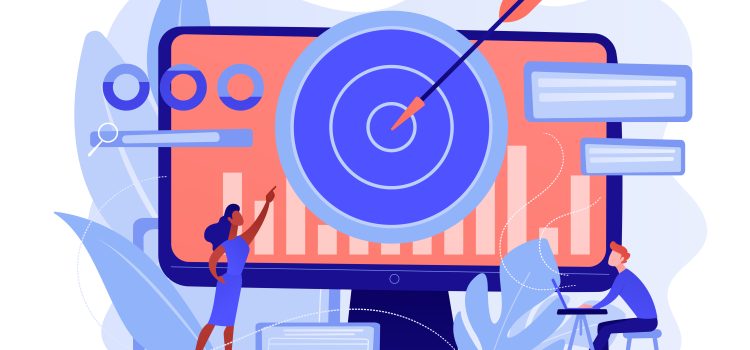
Imagine a scenario where a visitor, poised on the brink of conversion, navigates away from your website. What if you could guide them back, gently reminding them of the value your products or services hold? Remarketing is the secret sauce that transforms this ‘what if’ into a powerful reality. Through this engaging article, we journey into the heart of remarketing strategies, unveiling the tactics that not only bring these lost visitors back but also turn them into loyal customers.
Remarketing bridges this gap by focusing on those who’ve already shown interest in your brand. It’s a strategic manoeuvre that doesn’t just rely on broad reach; it hones in on the individuals who’ve interacted with your website, demonstrating intent. By understanding the nuances of remarketing, you unlock the potential to create personalized experiences that resonate with visitors and propel them down the conversion path.
From crafting compelling ad content to setting up effective campaigns, we’ll guide you step by step. We’ll also shed light on ethical considerations and showcase real-life success stories, demonstrating the transformative power of remarketing in action. As we navigate through these chapters, keep in mind that the goal isn’t just to engage, but to equip you with actionable insights that can be immediately applied to enhance your marketing prowess.
Remarketing, often referred to as retargeting, is a technique that takes advantage of the digital breadcrumbs users leave behind as they interact with your website. It’s a method that taps into the power of personalized engagement, offering a second chance to capture the attention of visitors who may have ventured away before completing a desired action. Let’s unravel the intricate layers of remarketing and delve into why understanding remarketing is pivotal for modern marketing success.
At its core, remarketing involves reconnecting with users who’ve already interacted with your brand’s website or digital assets. By placing a virtual marker, often in the form of a cookie, on a user’s device during their initial visit, you’re granted the ability to follow their digital footsteps as they navigate the web. This allows you to deliver tailored ads to them as they continue their online journey, ensuring your brand remains at the forefront of their minds.
The magic of remarketing lies in its ability to target users based on their past behaviours. Imagine a scenario where a user browses your online store, adds items to their cart, and then exits without making a purchase. Remarketing technology allows you to re-engage this user by displaying ads showcasing the exact products they considered. This approach capitalizes on the power of familiarity, invoking a sense of recognition that’s more likely to convert.
To grasp the psychology behind remarketing’s effectiveness, consider the mere-exposure effect, a psychological phenomenon where people tend to develop a preference for things they’re familiar with. Remarketing capitalizes on this principle by fostering familiarity through repeated exposure, eventually nudging users towards a conversion decision.
The advantages of remarketing shine bright as a beacon of strategic brilliance. Remarketing, a technique designed to re-engage users who’ve previously interacted with your brand, offers a multitude of benefits that go beyond the realm of conventional advertising. Let’s delve deeper into these benefits, backed by real-world examples that illuminate their impact and significance.
Remarketing’s ability to etch your brand into the memory of potential customers is a powerful asset. As users encounter your brand across different platforms and channels, it solidifies your presence in their minds. Consider a scenario where a user explored a travel booking website but didn’t complete a booking.
Through remarketing, they encounter ads featuring picturesque destinations and enticing travel deals across various websites and social media platforms. This repeated exposure cements the brand in their memory, making it more likely for them to choose this website when they’re ready to book their next vacation.
One of remarketing’s defining strengths is its capacity for tailored communication. By analyzing user behaviour, you can deliver ads that align with their preferences and interests. For instance, a user who browsed a website for fitness equipment without making a purchase can be targeted with remarketing ads showcasing new arrivals, special offers, or customer testimonials related to fitness gear. This personalized touch enhances the user’s engagement, as the content directly resonates with their intent and preferences.
The data-driven nature of remarketing positions it as a conversion powerhouse. Users who’ve already expressed interest in your products or services are more likely to convert upon encountering tailored ads. Imagine a user who added items to their online shopping cart but abandoned it without completing the purchase.
Remarketing can present them with ads displaying the exact items they were interested in, along with a special discount for completing the purchase. This gentle nudge often results in a higher conversion rate compared to general advertising efforts.
Remarketing stands out for its efficiency in utilizing resources. By targeting users who’ve exhibited an interest in your offerings, you’re focusing your efforts on an audience that’s more likely to convert. This leads to an improved return on investment (ROI). For instance, consider a car dealership that wants to promote its latest models. Through remarketing, they can reach users who previously explored specific car models on their website. This precision targeting ensures that their advertising budget is spent on users with genuine intent, maximizing the impact of their investment.
Remarketing’s segmentation potential enables you to tailor your messaging to different user groups based on their behaviours. This allows for a more personalized experience, fostering a deeper connection. For instance, a fashion retailer can segment users who viewed women’s clothing separately from those who explored men’s apparel. Remarketing ads can then showcase curated selections based on gender-specific preferences, catering to each group’s unique interests.
By guiding users along their customer journey, remarketing helps keep your brand at the forefront of their decision-making process. Suppose a user explored a travel agency’s website but didn’t book a trip. Through remarketing, they encounter ads that highlight positive testimonials from travellers who booked through the agency and had memorable experiences. This reinforcement of positive narratives can help ease doubts and encourage the user to make a booking, ultimately moving them further down the conversion funnel.
Why do visitors, who seemingly show interest in your website, abandon their journey without completing a desired action? The answer lies in the intricate realm of psychology, where doubts, distractions, and hesitations intertwine to shape user decisions. Delving into the psychology of abandonment not only illuminates the reasons behind this behavior but also provides valuable insights that can be leveraged to design effective remarketing strategies.
In a digital landscape characterized by a barrage of information, users often find themselves juggling multiple tasks and distractions. A user exploring an e-commerce site, for instance, might be drawn away by a notification, a new email, or a social media update. As they shift their attention elsewhere, the initial task of making a purchase takes a backseat. Understanding this aspect of human behaviour allows marketers to create remarketing strategies that bring users back to the task at hand. Crafting ads that gently remind users of the products they left behind can reignite their interest and refocus their attention.
Doubts and uncertainties often lurk behind user decisions to abandon. A visitor on a subscription-based service website might hesitate to commit due to concerns about hidden fees or commitment terms. This fear of the unknown can lead to abandonment as users grapple with doubts that deter them from completing an action. Remarketing can address this psychology by presenting ads that alleviate concerns. For instance, showcasing user testimonials or offering a limited-time discount can assuage fears and encourage users to take the next step.
The digital world offers a plethora of choices, which can lead to decision fatigue and indecision. Imagine a user exploring an online fashion retailer with a vast catalogue of options. Faced with an overwhelming array of choices, they might struggle to make a decision and eventually leave the website without making a purchase. Remarketing can counter this psychology by showcasing the specific items the user viewed, narrowing down the choices and making the decision-making process more manageable.
In an era where instant gratification is expected, users may abandon a website if they encounter hurdles or delays. An individual exploring a travel booking website might abandon the process if they encounter a complex booking form or a slow-loading page. Understanding this psychology underscores the importance of creating seamless user experiences. Remarketing can play a role here by displaying ads that highlight the ease of booking, emphasizing a user-friendly interface, and assuring users that their desired outcome can be achieved swiftly.
The psychology of loss aversion dictates that people are more motivated to avoid losses than to attain gains. A visitor who added items to their online shopping cart but didn’t proceed to checkout might abandon due to uncertainty about the purchase. They might hesitate, fearing they’ll regret the decision later. Remarketing can leverage this psychology by presenting ads that emphasize limited-time offers or highlight the potential benefits of the products, tapping into the user’s desire to avoid missing out.
Trust is a cornerstone of user behaviour. Users are more likely to abandon a website if they perceive it as untrustworthy or unreliable. For instance, a user exploring a financial services website might be abandoned if they feel uncertain about the security of their personal information. Remarketing can address this psychology by showcasing ads that highlight the website’s security measures, certifications, and customer reviews, fostering a sense of trust that encourages users to return.
crafting an effective remarketing strategy is akin to orchestrating a symphony of personalized engagement. Remarketing, at its core, is the art of reigniting connections with visitors who’ve ventured onto your digital turf but left without converting. As we delve into the intricacies of building a strategic remarketing approach, we uncover the key components that transform this art into a science of conversion.
One size doesn’t fit all in the realm of remarketing. Each user’s journey is unique, shaped by their behaviours and intents. Segmentation allows you to categorize visitors based on their interactions with your website. For instance, a travel website might segment users who viewed destinations in Asia separately from those interested in European getaways. By tailoring ads to specific segments, you enhance relevance and increase the likelihood of conversion.
Every effective strategy begins with a clear destination in mind. Define your goals for your remarketing campaign. Is it to encourage abandoned cart users to complete their purchases? Or to bring back users who visited a specific product page? Each goal shapes your messaging and guides the creation of compelling ads that align with user intent.
The heart of an effective remarketing strategy lies in delivering the right message at the right time. For instance, a user who explored laptops on an e-commerce website might be enticed by an ad showcasing the same laptops along with a limited-time discount. Crafting ads that resonate with the user’s intent during their initial visit increases the chances of re-engagement and conversion.
While repetition is a cornerstone of effective marketing, it’s crucial to strike a balance. Bombarding users with ads can lead to ad fatigue and a negative user experience. Set frequency caps to ensure users aren’t overwhelmed by your ads. Additionally, consider where your ads will be displayed. Display Network ads on websites they visit or use dynamic ads that appear in their social media feeds.
Dynamic remarketing takes personalization to another level. It enables you to showcase products or services users have previously shown interest in, often in the exact format they viewed. Imagine a user who abandoned their online shopping cart after adding a pair of shoes. With dynamic remarketing, they might encounter an ad displaying those exact shoes, possibly accompanied by a special offer to entice them back.
Urgency and exclusivity are potent psychological triggers. Creating a sense of urgency can prompt users to take action sooner rather than later. An online bookstore might employ a remarketing strategy that showcases bestselling books along with a countdown indicating a limited-time discount. This combination of urgency and value can prompt users to revisit the website and make a purchase.
Remarketing is an evolving process, and A/B testing is the compass that guides improvement. Experiment with different ad formats, copy variations, and visuals. Test different calls to action (CTAs) to discover what resonates best with your audience. Continuous testing and optimization ensure that your remarketing strategy remains effective and aligned with user preferences.
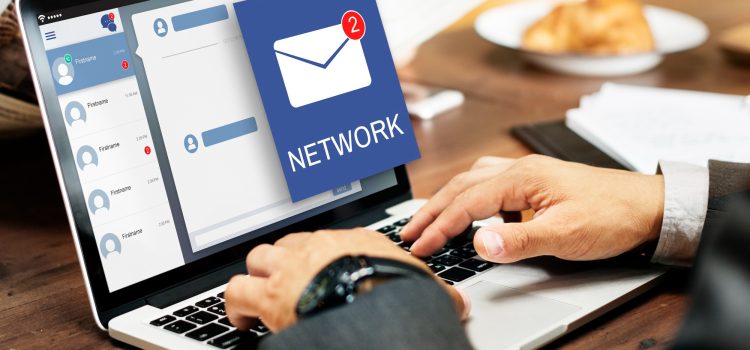

Email marketing remains a steadfast cornerstone of successful business strategies. It’s a direct line to your audience—a chance to engage, educate, and enchant. Yet, as the world becomes increasingly interconnected, the challenges of managing and scaling email campaigns have become more complex than ever before. How can you ensure that your emails reach the right inboxes at the right times, delivering messages that resonate and drive action?
Enter email automation, a beacon of innovation that has revolutionized the way marketers connect with their audience. Picture sending tailored messages without manual effort, orchestrating a symphony of personalized interactions, and turning once-passive subscribers into engaged brand advocates. It’s the realm where precision meets creativity, where efficiency dances with authenticity. Welcome to the world of streamlining your marketing campaigns through email automation—a realm where strategic prowess meets technological marvels.
In this insightful journey, we’ll unravel the power of email automation, demystify its inner workings, and unveil the remarkable impact it can have on your marketing efforts. Whether you’re a seasoned marketer or an aspiring entrepreneur, this article will guide you through the art and science of harnessing email automation’s potential to streamline your campaigns, elevate customer experiences, and achieve remarkable results.
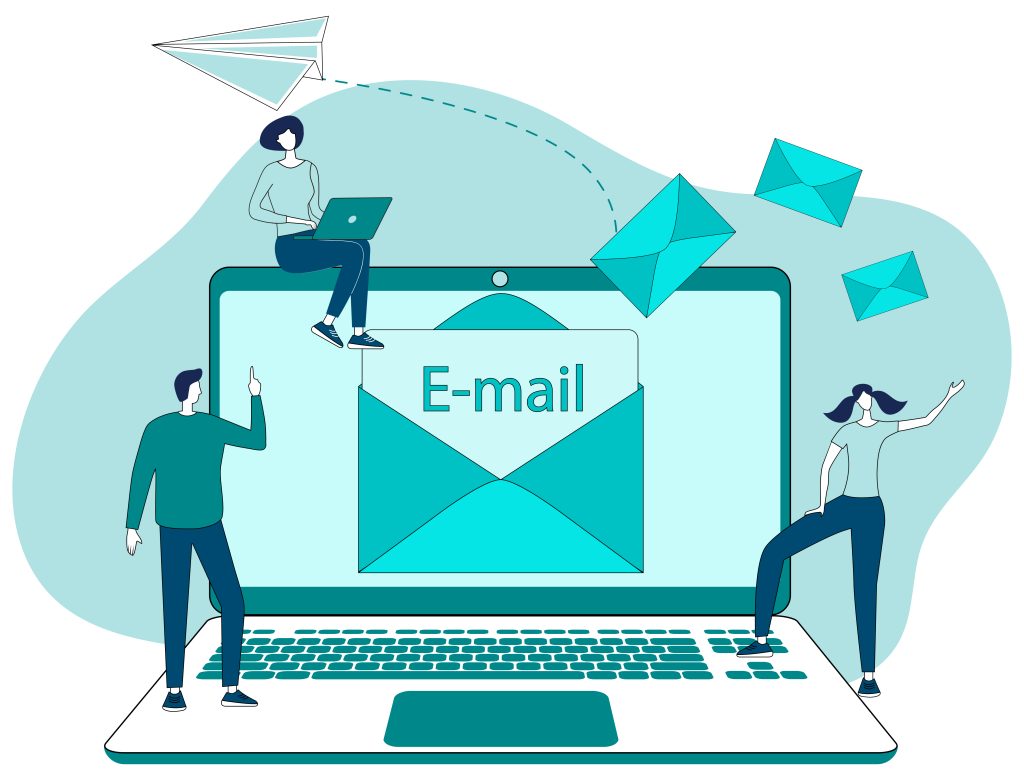

Email automation stands as a cornerstone innovation that has redefined the way businesses engage with their target audience. At its core, email automation is a strategic approach that utilizes technology to streamline and optimize the delivery of emails based on predefined triggers and conditions. This method transcends the limitations of manual intervention, allowing marketers to orchestrate a seamless flow of communication that aligns with the recipient’s behaviour, preferences, and journey within the sales funnel.
In essence, email automation is akin to a conductor guiding an orchestra, ensuring that each note is perfectly timed and harmoniously synchronized. Through the intricate interplay of technology and strategy, email automation empowers marketers to deliver messages that are not only timely but also relevant, thus enhancing the overall efficacy of their campaigns.
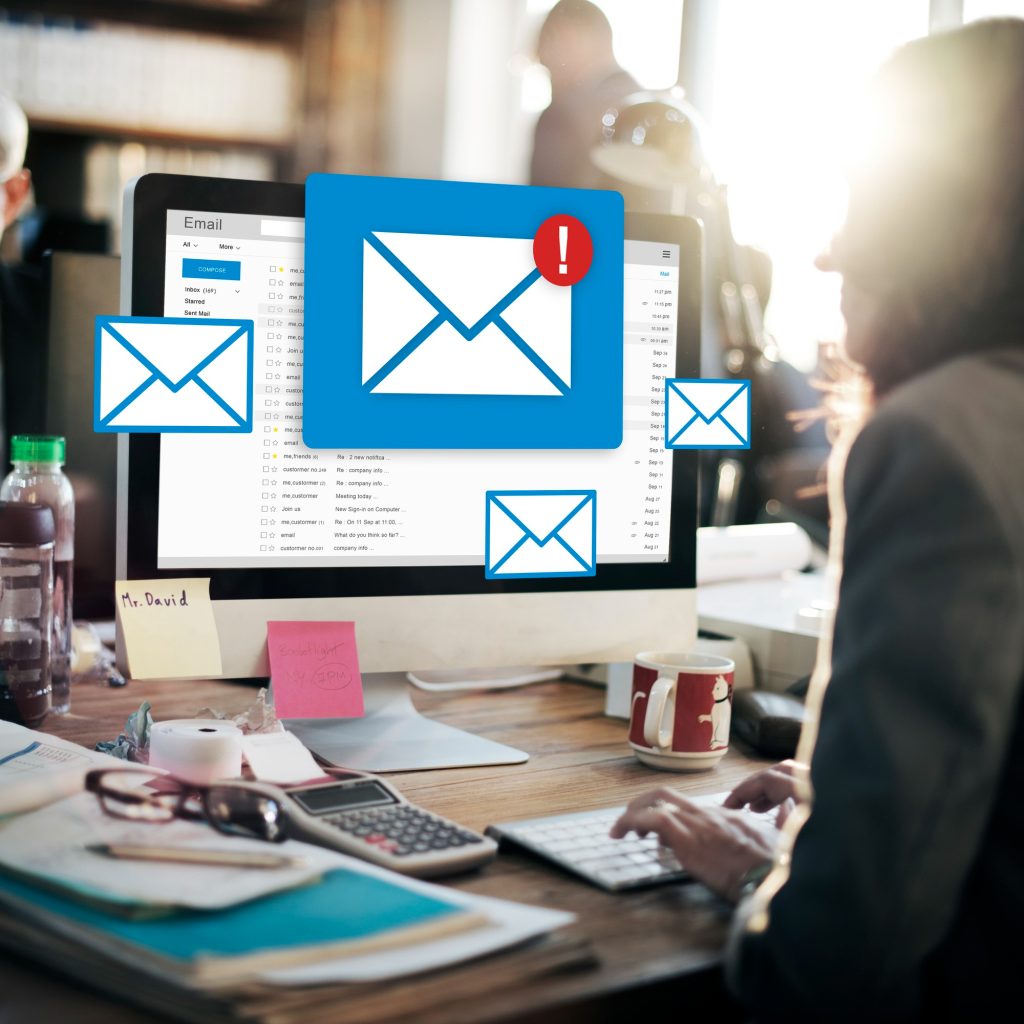

The realm of email automation presents a panorama of advantages that transcend the conventional boundaries of marketing. These benefits coalesce to form a symphony of efficiency, personalization, and enhanced engagement, ultimately orchestrating an experience that leaves an indelible mark on both businesses and their audience.
Increased Efficiency
Email automation acts as the maestro of efficiency, liberating marketers from the arduous choreography of manual email distribution. Imagine a scenario where, after a single setup, triggered emails seamlessly cascade into recipients’ inboxes, tailored to their interactions. This efficient automation liberates your team’s bandwidth, allowing them to focus on crafting compelling content and devising strategic campaigns.
Example: A clothing retailer sets up an automated welcome series that triggers upon a subscriber’s signup. A meticulously planned sequence of emails showcases the brand’s offerings, leading to an exclusive discount code, all delivered seamlessly without manual intervention.
Precision Personalization
Email automation weaves a tapestry of personalized communication that resonates with each recipient’s journey. Through careful segmentation and data analysis, messages transform into tailored experiences. It’s akin to a virtuoso customizing a performance for each member of the audience. The result is a deeper connection that elevates engagement.
Example: An e-commerce platform employs automation to send personalized recommendations based on browsing and purchase history. A customer who recently bought running shoes receives an email with complementary running accessories, creating a sense of personal attention.
Timely Engagement
The automated cadence of email campaigns ensures that messages reach recipients at opportune moments, creating an orchestration of engagement. Just as a conductor guides a symphony, email automation orchestrates messages to align with specific triggers, delivering content when it matters most.
Example: An online course provider triggers a follow-up email after a user completes a module. This timely email thanks the user for progress, offers a glimpse of the next module’s content, and reinforces their commitment to learning.
Enhanced Segmentation
Segmentation is the harmonious division of your audience into distinct groups, each resonating with tailored messages. Email automation elevates this process, allowing for dynamic categorization based on behaviours, demographics, and interactions. The result? A crescendo of relevance that captivates recipients.
Example: A travel agency employs segmentation to categorize customers based on their travel preferences—luxury, adventure, and family. Subsequently, automated emails feature exclusive deals and destinations tailored to each segment’s preferences.
Data-Driven Insights
In the world of email automation, data isn’t just a series of numbers; it’s the sheet music that guides your campaign’s melody. Detailed analytics provide insight into open rates, click-through rates, and conversion metrics. These insights act as the conductor’s baton, guiding you to refine your approach for optimal impact.
Example: A software company observes that automated onboarding emails have higher engagement rates than generic newsletters. Armed with this data, they adjust their strategy to incorporate more onboarding-focused content.
Just as a composer meticulously arranges notes to create a symphony, crafting an effective email automation strategy requires careful orchestration of elements to resonate harmoniously with your audience. A well-designed strategy is the foundation upon which successful email automation campaigns are built. It involves defining clear objectives, understanding your audience, mapping customer journeys, creating compelling content, and continuously refining your approach based on data-driven insights.
Defining Clear Goals: Begin by setting precise goals for your email automation efforts. Whether it’s increasing sales, nurturing leads, or driving engagement, well-defined objectives serve as your guiding notes throughout the orchestration process.
Audience Segmentation: Like sections in an orchestra, your audience is diverse and requires differentiation. Segment your subscribers based on demographics, behaviour, interests, and purchase history. This segmentation ensures that each message resonates with the unique preferences of its recipients.
Mapping Customer Journeys: Just as a musical journey has distinct movements, customer journeys have stages. Map out the touchpoints your customers encounter, from initial contact to conversion and beyond. Identify triggers that prompt specific emails to be sent at critical moments in their journey.
Creating Compelling Content: Just as melodies captivate the listener, content engages the reader. Develop a content plan that aligns with each stage of the customer journey. Whether it’s welcoming new subscribers, nurturing leads, or re-engaging dormant customers, craft content that educates, entertains, and resonates with recipients.
Automation Workflow Design: Like the arrangement of musical instruments, design the flow of your automation sequence. Determine the timing and sequence of emails to ensure a coherent and engaging narrative. This orchestration guides recipients through a journey that feels fluid and relevant.
Testing and Optimization: Just as musicians rehearse to perfect their performance, regularly test and optimize your email automation strategy. Experiment with different subject lines, content variations, and sending times to identify what resonates most with your audience. Use A/B testing to fine-tune your approach based on empirical results.
Imagine an e-commerce retailer specializing in fitness apparel. Their email automation strategy could involve the following elements:
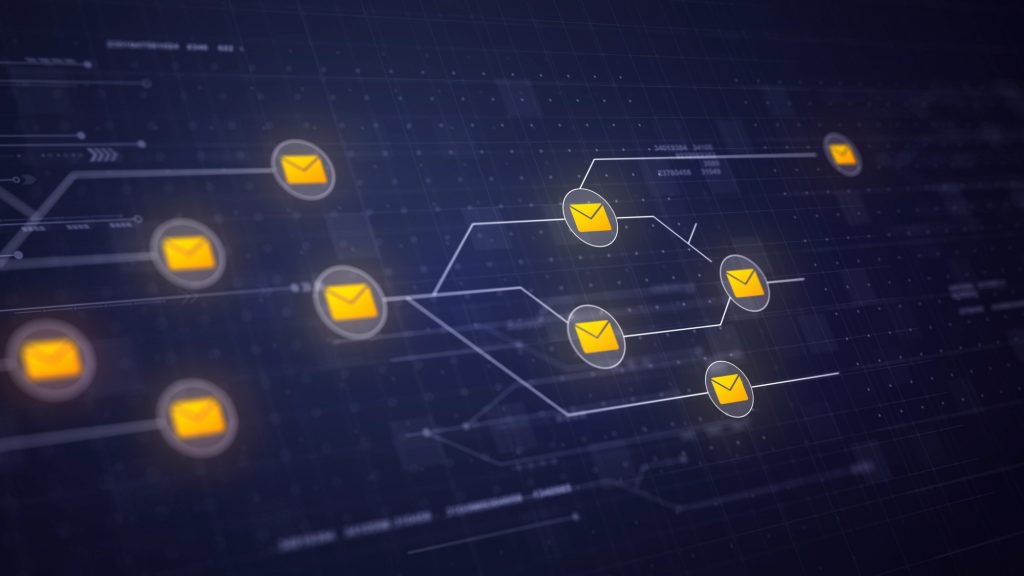

Just as a symphony comprises distinct movements that weave together to create a complete musical experience, an email automation strategy incorporates various types of campaigns, each with a specific purpose and rhythm. These automated email campaigns act as orchestrated sequences, engaging recipients at different stages of their journey, nurturing relationships, and driving conversions. Let’s explore the melodies of various automated campaigns and the unique roles they play in enhancing engagement and achieving marketing goals.
Similar to the opening notes of a symphony, a welcome series is the initial introduction to your brand’s melody. It comprises a sequence of emails that greet new subscribers, setting the tone for future interactions. The welcome series provides an opportunity to showcase your brand’s value, build trust, and encourage subscribers to take further action.
Example: A software company sends a welcome email to new subscribers, introducing them to the product’s features. Subsequent emails in the series include user testimonials, case studies, and a limited-time offer to encourage software adoption.
Just as a conductor guides a symphony’s progression, abandoned cart emails guide users back to their interrupted journey. These emails are triggered when users leave items in their shopping carts without completing the purchase. Abandoned cart emails serve as a gentle reminder and offer incentives to encourage conversion.
Example: An online retailer sends an abandoned cart email featuring the items left behind, accompanied by a discount code as an incentive to complete the purchase.
Drip campaigns are akin to a series of melodic drops that engage recipients over time. They involve sending a sequence of emails at predefined intervals, nurturing leads, and gradually guiding them through the decision-making process. Drip campaigns are effective for educating subscribers and maintaining consistent communication.
Example: An educational platform implements a drip campaign for new subscribers. Over the course of several weeks, they receive emails featuring curated content, insightful articles, and invitations to webinars, gradually positioning the platform as a valuable resource.
Just as an orchestra celebrates milestones with fanfare, birthday and anniversary emails celebrate your customers. These emails are sent on recipients’ birthdays or the anniversary of their first purchase. They create a personal connection, showcasing your appreciation and offering special incentives.
Example: A restaurant chain sends birthday emails to customers, offering a complimentary dessert or discount on their next visit, enhancing customer loyalty and satisfaction.
Similar to a composer rekindling interest with a change in tempo, re-engagement campaigns aim to revive interactions with inactive subscribers. These campaigns target individuals who haven’t engaged with your emails for a certain period. Re-engagement emails often include incentives, reminders of the recipient’s journey, or invitations to update preferences.
Example: A fashion retailer sends a re-engagement email to subscribers who haven’t opened emails in the past three months. The email showcases new arrivals and offers a discount as an incentive to rekindle their interest.
Much like harmonious melodies that complement one another, upsell and cross-sell campaigns complement the customer’s journey. Upsell campaigns suggest premium or upgraded products, while cross-sell campaigns recommend related or complementary items. These campaigns increase the average order value and enhance the customer’s shopping experience.
Example: An electronics retailer sends an upsell email to a customer who recently purchased a laptop, offering an extended warranty or premium software package. Additionally, they send a cross-sell email suggesting laptop accessories such as a laptop bag, mouse, and headphones.
Much like a composer selects the perfect instruments to create a symphony, choosing the right email automation tools is crucial for orchestrating a harmonious marketing campaign. Email automation tools are the conduits that transform your strategy into reality, facilitating the seamless delivery of messages, monitoring performance, and providing insights for optimization. In this section, we delve into the factors to consider when selecting email automation tools and highlight examples of popular platforms that empower marketers to compose successful campaigns.
The future of email automation mirrors the symphony’s evolution—a harmonious blend of tradition and innovation. As technology progresses, marketers must stay attuned to emerging trends, adapting their strategies to resonate with the changing preferences of their audience. By embracing AI-powered personalization, predictive analytics, hyper-segmentation, interactive emails, and other advancements, marketers ensure their campaigns remain in harmony with the ever-evolving rhythms of consumer behaviour and technology.
In the dynamic realm of modern marketing, email automation emerges as a cornerstone strategy that drives engagement nurtures connections, and fuels conversions. The journey through this article has unveiled the essence of effective email automation – from mastering its fundamental principles to crafting personalized messages, mapping customer journeys, and selecting the right tools.
The power of email automation lies in its ability to resonate with recipients, creating meaningful connections that go beyond mere communication. It’s a journey that leads to heightened efficiency, precise personalization, and increased engagement – qualities that are indispensable in today’s competitive landscape.
If you’re looking to harness the potential of email automation without the complexities, our dedicated team is here to assist. Reach out to us for expert guidance in elevating your email marketing strategy. Together, we can transform your campaigns into powerful tools that captivate your audience, deliver results, and establish a lasting impact on your brand’s narrative.
Comments